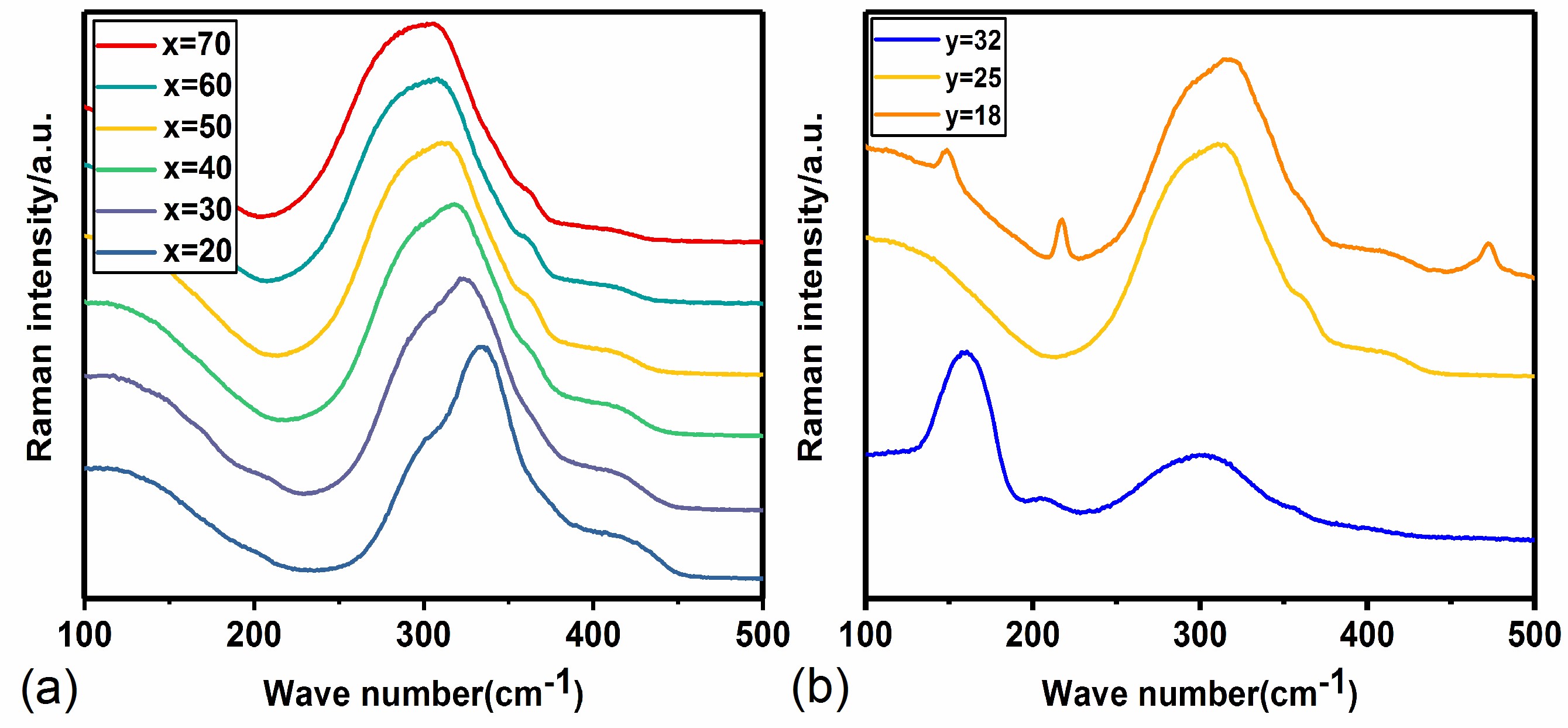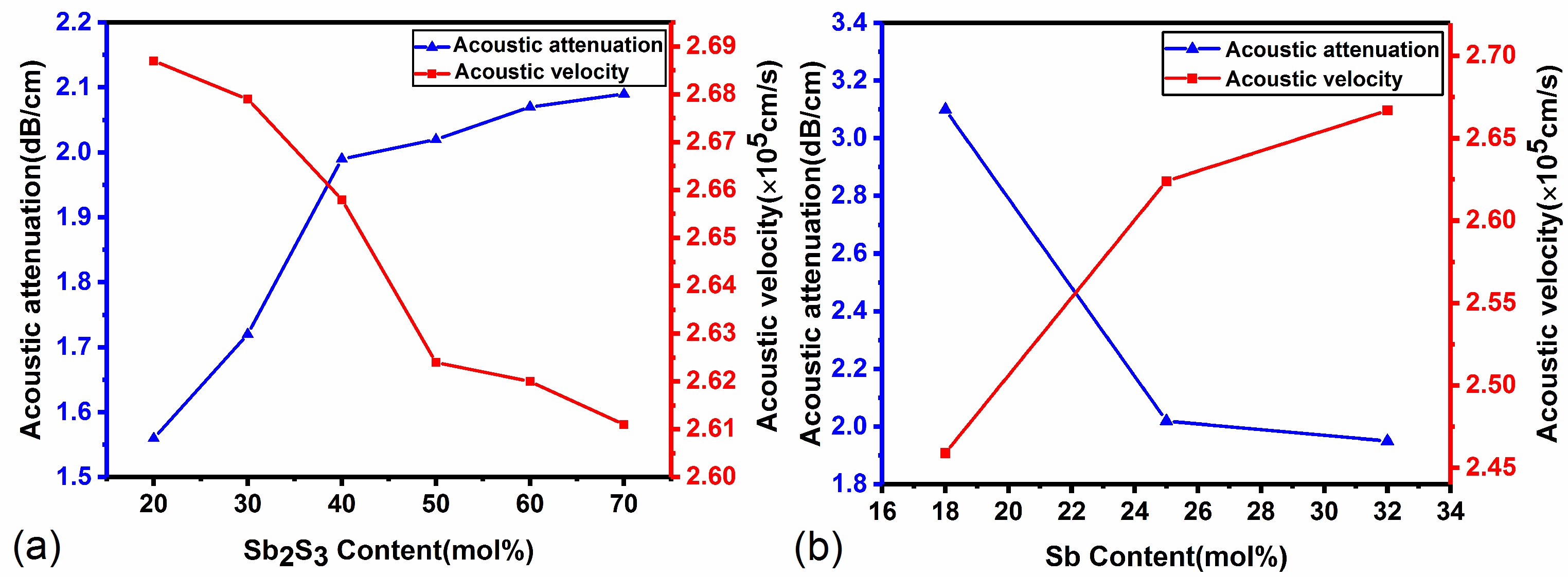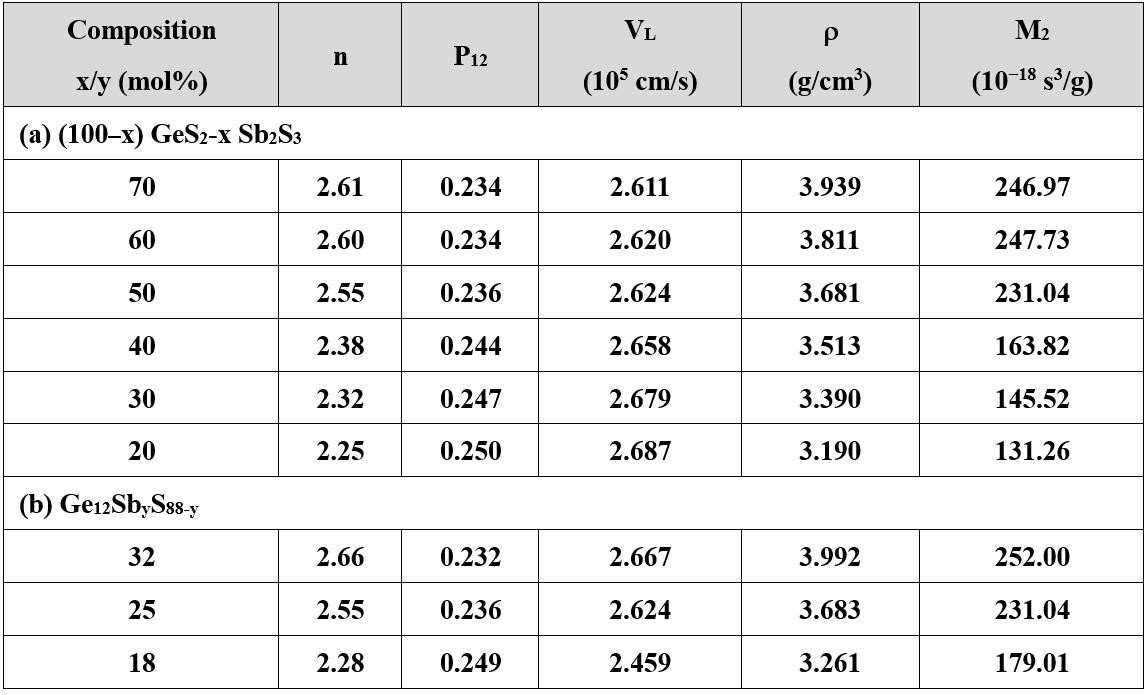Recently, Zhenfei Cao (first author), a postgraduate student in our laboratory, and professor Shixun Dai (corresponding author) have published an article entitled “Correlation between acousto-optic and structural properties of Ge–Sb–S chalcogenide glasses” in Ceramics International (Ceramics International. 2020, 46(8), 10385-10391. https://doi.org/10.1016/j.ceramint.2020.01.036).
Acousto-optic interaction has been widely used in basic acousto-optic devices such as laser beam deflection and modulation with the development of optical communication technology, micro-acoustic technology and acousto-optic materials. In order to further improve the performance of various acousto-optic devices, new and high-quality acousto-optic materials have become research hotspots. Chalcogenide glasses possess attractive acousto-optic properties with high figure of merit M2, because of their high refractive index and low acoustic velocity. To date, the most widely studied acousto-optic materials are mainly concentrated in As-containing chalcogenide glasses in the near-infrared band. In order to explore safe and environmental acousto-optic materials, Ge–Sb–S glasses were prepared and their thermomechanical, elastic, acoustic and optical properties were studied completely. Two series glass compositions were selected and distinguished by two lines: (a) (100–x) GeS2-xSb2S3and (b) Ge12SbyS88-y. The acousto-optic figures of merit (M2) of the glasses were calculated using these above measured parameters and the Raman spectra of the glasses (Fig. 1) were measured to explore the relationship between the acousto-optic properties and the changes in the internal structures of the glasses. The study found that in the first series, the increase in Sb2S3 content and the decrease in GeS4tetrahedral units led to a decrease in the stability of the glass and an increase in acoustic attenuation (Fig. 2a). Meantime, the refractive index increases with increased Sb element, greatly increasing the value of M2 (Table 1). In the second series, the internal structure of the glass changed from loose to dense which caused the acoustic attenuation to decrease (Fig. 2b) and M2 to increase (Table 1) with increased Sb content. In this series of samples, Ge12Sb32S56 glass obtained the highest value of M2 at 1550 nm (M2 = 252 ´ 10-18 s3/g) and the corresponding acoustic attenuation at 25 MHz ultrasonic frequency was 1.95 dB/cm, which effectively achieved the purpose of compromise between high acousto-optic figure of merit and low acoustic attenuation.

Fig. 1: Raman spectra of glasses in the system: (a) (100–x) GeS2-xSb2S3; (b) Ge12SbyS88-y.

Fig. 2: Acoustic attenuation and acoustic velocity versus (a) Sb2S3content in (100–x) GeS2-xSb2S3glasses; (b) Sb content in Ge12SbyS88-yglasses.
Table 1. Properties relating to acousto-optic figure of merit at 1550 nm



